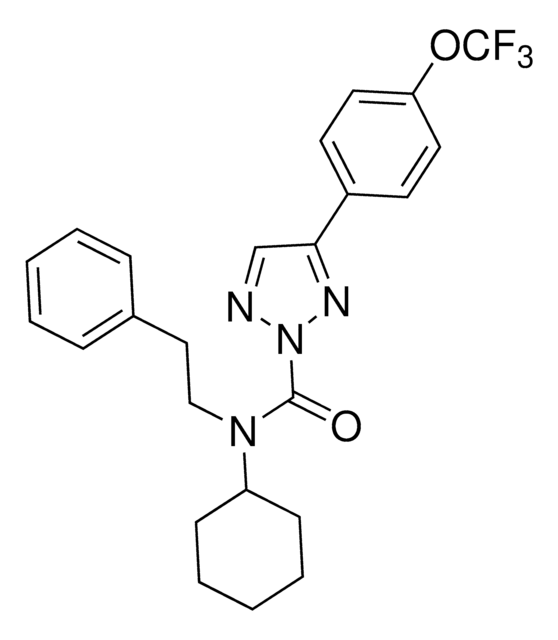P-090
α-Pyrrolidinovalerophenone hydrochloride solution
1.0 mg/mL in methanol (as free base), ampule of 1 mL, certified reference material, Cerilliant®
About This Item
Polecane produkty
klasa czystości
certified reference material
Postać
liquid
Właściwości
(Snap-N-Spike®)
opakowanie
ampule of 1 mL
producent / nazwa handlowa
Cerilliant®
drug control
Narcotic Licence Schedule E (Switzerland); psicótropo (Spain); Decreto Lei 15/93: Tabela IIA (Portugal)
stężenie
1.0 mg/mL in methanol (as free base)
metody
gas chromatography (GC): suitable
liquid chromatography (LC): suitable
Zastosowanie
forensics and toxicology
format
single component solution
temp. przechowywania
−20°C
ciąg SMILES
O=C(C1=CC=CC=C1)C(CCC)N2CCCC2.Cl
InChI
1S/C15H21NO.ClH/c1-2-8-14(16-11-6-7-12-16)15(17)13-9-4-3-5-10-13;/h3-5,9-10,14H,2,6-8,11-12H2,1H3;1H
Klucz InChI
ROMXVSMENBAYRM-UHFFFAOYSA-N
Opis ogólny
Zastosowanie
- Synthetic Drug α-PVP as the Hydrated Chloride Salt: This study presents a comprehensive analysis of α-pyrrolidinovalerophenone hydrochloride (α-PVP HCl), focusing on its crystal structure as a hydrate form. The research addresses the pharmacological and psychoactive properties of α-PVP, commonly used in neurochemical studies to understand its effects on neurotransmitter systems, particularly in relation to its stimulant activity. This work is crucial for drug enforcement and public health safety due to the compound′s potency and potential for abuse, aiding in the development of detection methods and therapeutic interventions (Wood et al., 2016).
Informacje prawne
produkt powiązany
Hasło ostrzegawcze
Danger
Zwroty wskazujące rodzaj zagrożenia
Zwroty wskazujące środki ostrożności
Klasyfikacja zagrożeń
Acute Tox. 3 Dermal - Acute Tox. 3 Inhalation - Acute Tox. 3 Oral - Flam. Liq. 2 - STOT SE 1
Organy docelowe
Eyes,Central nervous system
Kod klasy składowania
3 - Flammable liquids
Klasa zagrożenia wodnego (WGK)
WGK 2
Temperatura zapłonu (°F)
49.5 °F
Temperatura zapłonu (°C)
9.7 °C
Certyfikaty analizy (CoA)
Poszukaj Certyfikaty analizy (CoA), wpisując numer partii/serii produktów. Numery serii i partii można znaleźć na etykiecie produktu po słowach „seria” lub „partia”.
Masz już ten produkt?
Dokumenty związane z niedawno zakupionymi produktami zostały zamieszczone w Bibliotece dokumentów.
Nasz zespół naukowców ma doświadczenie we wszystkich obszarach badań, w tym w naukach przyrodniczych, materiałoznawstwie, syntezie chemicznej, chromatografii, analityce i wielu innych dziedzinach.
Skontaktuj się z zespołem ds. pomocy technicznej











